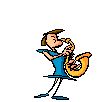FOLK BY THE OAK, HATFIELD HOUSE, HERTFORDSHIRE
Sunday, 26th July, 2009
[Introduction]

Upon seeing the line-up for the 2009 Folk By The Oak concert in the gardens of Hatfield House, Hertfordshire, I bought a ticket online without a moment's hesitation. This is the second year running that the event has been staged here and is arguably still Hertfordshire's best kept secret. I prefer festivals where the crowd is of a reasonable and comfortable size. Also important is the type of person frequenting such festivals. Compared to festivals I have attended, Folk By The Oak has to go down as the most "civilized" bunch of people I have ever witnessed at a festival. In fact nobody was even searched upon entering the ground (nor was it necessary), despite the fact that one was encouraged to "bring a picnic and a bottle of your favourite tipple". It was an exceptionally well organised event. These factors certainly contributed to this being a thoroughly enjoyable day's entertainment. Of course I am happiest when I can put my lens to good use. I left home around 12h30 and upon arrival some 45 minutes later, a queue of people several hundred yards long had formed at the entrance.
Hatfield House is the home of the Marquess of Salisbury. The house was built between 1607 and 1611 during the reign of James 1. In the extensive gardens is the surviving wing of the Royal Palace of Hatfield (circa 1485). It is here that Queen Elizabeth 1 spenther childhood. In November 1558, Elizabeth received news of the death of her sister Mary Tudor and her accession to the throne, whilst sitting under an oak tree in the very same area of Hatfield Park as Folk By The Oak is staged.
It was the musical line-up that caught my attention and all the artists were of exceptional talent! Not one act disappointed, except for the fact that the sets seemed a bit short for some of the earlier acts. To be honest, I can't say that I have ever been a great fan of popular folk music, generally speaking. I was never a great fan of folk troubadours in the mould of Bob Dylan or Leonard Cohen, preferring instead, the more progressive folk-rock music of Crosby, Stills , Nash and Young and their renowned and intricate harmonies or arguably the greatest singer-songwriter of all time, the jazz embracing Joni Mitchell. Perhaps it is my Scottish roots (my grandmother was Scottish), however I have always been attracted to the Celtic folk sound and have thus always been a fan of bands like Clannad and more recently, Iona. Since I have been in the United Kingdom, I have grown to love English, Scottish and Irish folk music to an even greater extent. I think what has attracted me to the likes of Karine Polwart, Kathryn Tickell, Flook, Lau and Eddi Reader is a "new approach" to folk music, a freshness and injection of new ideas in the music and arrangements. Call it progressive folk, if you will.
It was interesting to me that both Jim Moray's and Kathryn Tickell's bands both featured the use of the Melodeon and others the Accordion, whilst Jim Moray, in particular, referred to Morris dancing whilst introducing some of the songs. The Melodeon is the most common instrument used in Morris dancing, a form of English folk dance. There are claims that English records of the morris dance dating back to 1448 exist, but these are open to dispute. There is no mention of "morris" dancing earlier than the late 15th century. While there is still some dispute as to the origin of the term "morris," the most widely accepted theory is that the term was moorish dance, morisques in France, Moriskentanz in Germany, moreška in Croatia, and moresco, moresca or morisca in Italy and Spain, which eventually became morris dance. Before the English Civil War, the working peasantry took part in morris dances, especially at Whitsun (Pentecost). In 1600 the Shakespearean actor William Kempe morris danced from London to Norwich, an event chronicled in his Nine Days Wonder (1600). The Puritan government of Oliver Cromwell, however, suppressed Whitsun Ales and other such festivities. When the crown was restored by Charles II, the springtime festivals were restored. The Jig is a form of lively folk dance, as well as the accompanying dance tune, originating in England in the sixteenth century and today most associated with Irish and Scottish country dance music. The term jig was probably derived from the French 'giguer', meaning 'to jump' or giga, the Italian. In the seventeenth century the dance was adopted in Ireland and Scotland, where it was widely adapted, and with which countries they are now most often associated. The jig is second only to the reel in traditional Irish dance and popular, but somewhat less common in Scottish country dance music.
The lineup:
14h00 - 1440 The Shee
14h55 - 15h40 Chris Wood
16h00 - 16h50 Karine Polwart
17h10 - 18h00 Jim Moray
18h20 - 19h10 Kathryn Tickell Band
19h30 - 20h20 Lau
20h40 - 22h00 Kate Rusby
